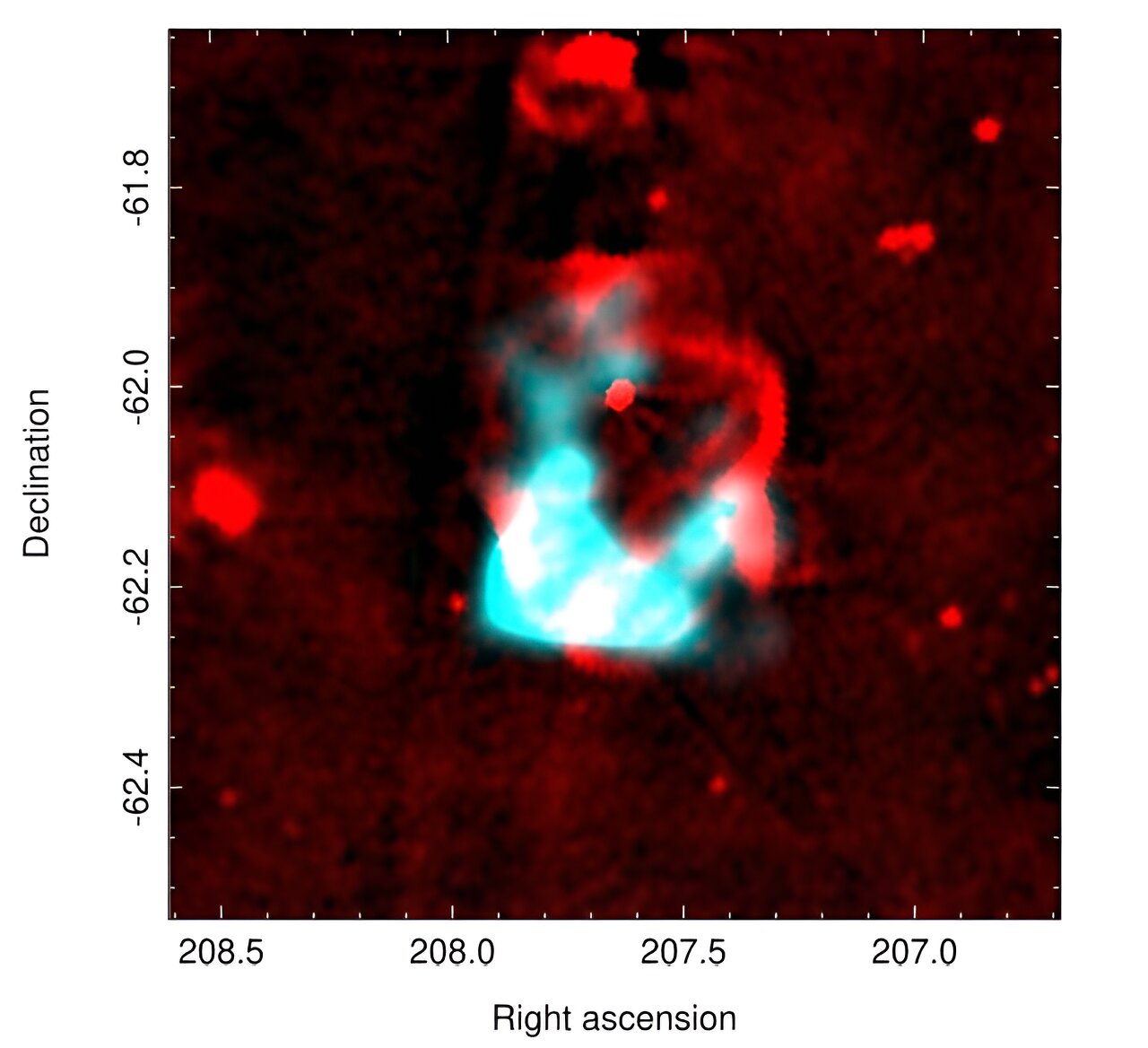
Using Spektr-RG and Fermi space observatories, German astronomers have investigated the supernova remnant SNR G309.8+00.0 in X-rays and gamma rays. Results of the new study, presented June 25 on the preprint server arXiv, deliver important insights into the properties of this supernova remnant.
Supernova remnants (SNRs) are diffuse, expanding structures resulting from a supernova explosion. They contain ejected material expanding from the explosion and other interstellar material that has been swept up by the passage of the shockwave from the exploded star.
Studies of supernova remnants are important for astronomers, as they play a key role in the evolution of galaxies, dispersing the heavy elements made in the supernova explosion and providing the energy needed for heating up the interstellar medium. SNRs are also believed to be responsible for the acceleration of galactic cosmic rays.
SNR G309.8+00.0 is a supernova remnant lying exactly on the galactic plane, first discovered in radio wavelengths about half a century ago. It appears as a well-defined shell of elliptical shape and a size of 25 by 19 arcminutes. The distance to SNR G309.8+00.0 is estimated to be between 10,000 and 18,000 light years.
Although SNR G309.8+00.0 has been known for decades, it has not been detected at any other wavelengths. Now, a team of astronomers led by Miltiadis Michailidis of the Institute for Astronomy and Astrophysics Tübingen in Germany has decided to change this by exploring this SNR in X-ray and gamma-ray bands.
“We present the first study of the well-established, from radio observations, SNR G309.8+00.0 at higher energies,” the researchers wrote in the paper.
The observations show that the X-ray emission from SNR G309.8+00.0 is mainly confined to the 1–2 keV energy range. The X-ray emission has an elliptical shape and the remnant’s shell-type appearance is in good spatial correlation with the radio synchrotron emission from the SNR. The X-ray emission mainly fills the southern half of the remnant’s shell.
The study found that the significant fraction of the gamma-ray emission observed in SNR G309.8+00.0 comes from the source identified as 4FGL J1349.5-6206c. Further analysis allowed the team to decompose this source into four point-like components, among which one is spatially coincident with the shell of SNR G309.8+00.0.
Based on the collected data, the authors of the paper assume that the distance to SNR G309.8+00.0 is at least 19,500 light years; therefore the remnant is located farther away than previously thought. This suggests that the age of the SNR is between 100,000 and 350,000 years.
More information:
Miltiadis Michailidis et al, A look at the high energy aspects of the supernova remnant G309.8+00.0 with eROSITA and Fermi-LAT, arXiv (2024). DOI: 10.48550/arxiv.2406.17493
© 2024 Science X Network
Citation:
German scientists investigate supernova remnant SNR G309.8+00.0 at high energies (2024, July 2)
retrieved 2 July 2024
from https://phys.org/news/2024-07-german-scientists-supernova-remnant-snr.html
This document is subject to copyright. Apart from any fair dealing for the purpose of private study or research, no
part may be reproduced without the written permission. The content is provided for information purposes only.







